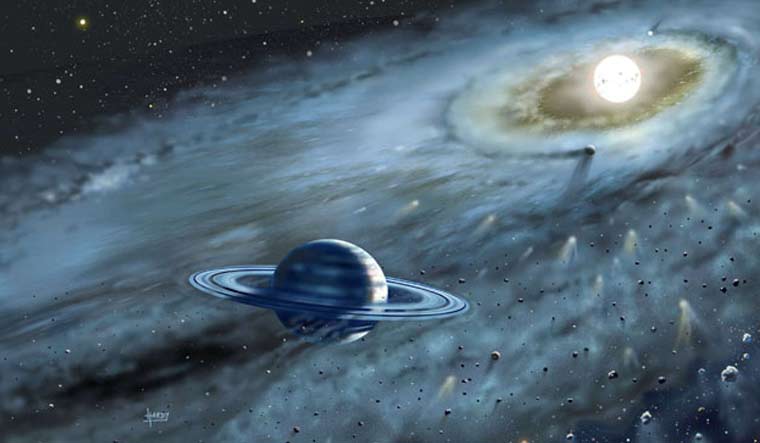NASA is probing the mysterious disappearance of an exoplanet which was first photographed by the Hubble Space Telescope in 2004.
Astronomers were surprised to find that the exoplanet ‘Fomalhaut b’, orbiting its star, Fomalhault 25, apparently vanished.
Fomalhaut b was noted for its special characteristics— the exoplanet was unusually bright in visible light and was devoid of a detectable infrared heat signature.
Some scientists explain that, Fomalhaut b may not have been full-sized planetary object, but an expanding cloud of dust formed out of a collision between two large bodies orbiting the Fomalhaut star system.
Announced in 2008 based on data taken in 2004 and 2006, Fomalhaut b was clearly visible in several years of Hubble observations as a moving dot. Until then, evidence for exoplanets had mostly been inferred through indirect detection methods, such as subtle back-and-forth stellar wobbles, and shadows from planets passing in front of their stars.
It could be that the expanding cloud of dust wrongly identified as an exoplanet got thinner and thinner over the years till it was not visible for Hubble’s telescope to detect.
"These collisions are exceedingly rare and so this is a big deal that we actually get to see one," said András Gáspár of the University of Arizona, Tucson. "We believe that we were at the right place at the right time to have witnessed such an unlikely event with NASA's Hubble Space Telescope."
"The Fomalhaut system is the ultimate test lab for all of our ideas about how exoplanets and star systems evolve," added George Rieke of the University of Arizona's Steward Observatory. "We do have evidence of such collisions in other systems, but none of this magnitude has been observed in our solar system. This is a blueprint of how planets destroy each other."
Equally confounding is that the team reports that the object is more likely on an escape path, rather than on an elliptical orbit, as expected for planets. This is based on the researchers adding later observations to the trajectory plots from earlier data. "A recently created massive dust cloud, experiencing considerable radiative forces from the central star Fomalhaut, would be placed on such a trajectory," said Gáspár. "Our model is naturally able to explain all independent observable parameters of the system: its expansion rate, its fading, and its trajectory."
Because Fomalhaut b is presently inside a vast ring of icy debris encircling the star, colliding bodies would likely be a mixture of ice and dust, like the comets that exist in the Kuiper belt on the outer fringe of our solar system. Gáspár and Rieke estimate that each of these comet-like bodies measured about 125 miles (200 kilometers) across (roughly half the size of the asteroid Vesta).
Also Read
- Sunita Williams turns 59! Find out how the astronaut celebrated her birthday in space
- Who is Group Captain Shubhanshu Shukla picked for the Indo-US mission to space station?
- Sunita Williams' Starliner journey: NASA's space mission ft Boeing-ULA Atlas V explained
- Before and after pictures from NASA show the impact of Dubai floods
Gáspár and Rieke along with other members of an extended team will also be observing the Fomalhaut system with NASA's upcoming James Webb Space Telescope in its first year of science operations. The team will be directly imaging the inner warm regions of the system, spatially resolving for the first time the elusive asteroid-belt component of an extrasolar planetary system. The team will also search for bona fide planets orbiting Fomalhaut that might be gravitationally sculpting the outer disk. They will also analyse the chemical composition of the disk.


